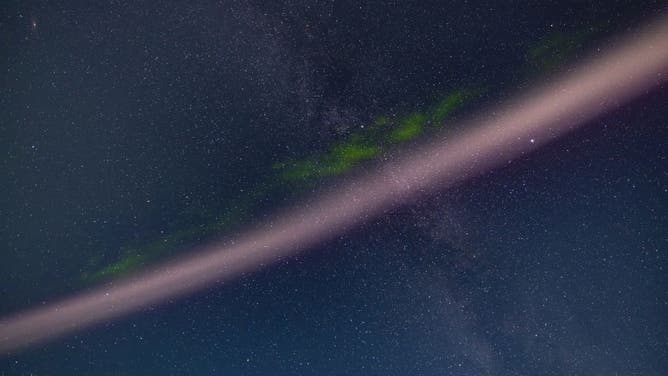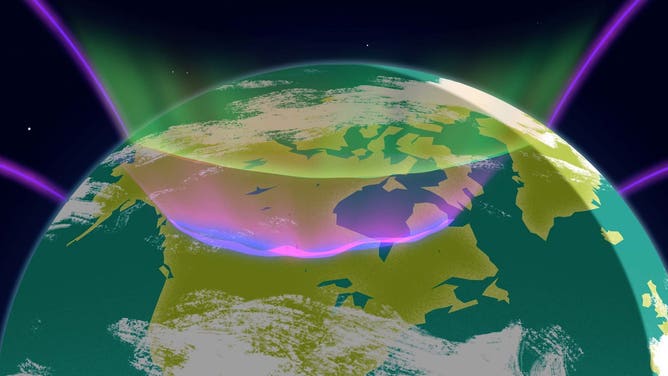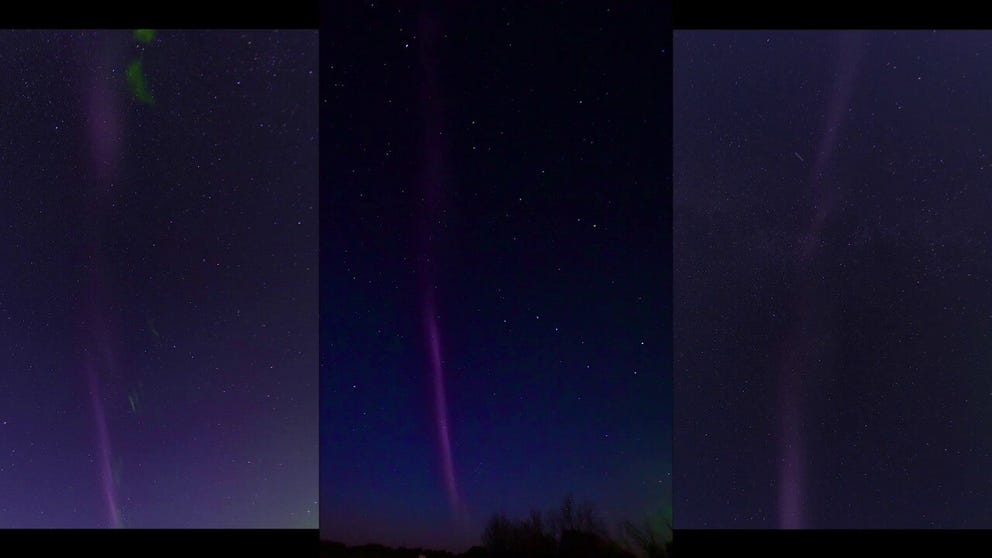Meet Steve: A new space weather phenomena being seen with aurora lights
Steve appears as a long streak of purple light and often appears along with Northern Lights. Steve forms through the same type of process as aurora lights, however, it travels along different magnetic field lines and can appear at lower latitudes.
Meet the aurora named Steve
`Aurorasaurus team leader Liz MacDonald, a space scientist at NASA’s Goddard Space Flight Center, explains how the new aurora called Steve was discovered by citizen scientists. (Video: NASA's Goddard Space Flight Center)
Strange dancing pillars of purple light in the sky continue to dazzle aurora light fans. Is it the aurora borealis? Is it space debris? No. It’s Steve.
Named by an aurora lights enthusiast Facebook group in 2016, this relatively new type of space weather phenomenon is known as "Steve," a nickname the group coined. Like all things in space science, these purple streaks of light needed a fun acronym. The lights are now known as STEVE, which stands for Strong Thermal Emission Velocity Enhancement.
7 THINGS TO KNOW ABOUT THE NORTHERN LIGHTS

A portrait of the infamous STEVE arc of hot flowing gas associated with an active aurora, here showing his distinctive pink colour and the fleeting appearance of the green picket fence fingers that often show up hanging down from the main arc. On this night the green fingers lasted no more than two minutes. (Photo by: Alan Dyer/VW Pics/Universal Images Group via Getty Images)
(Getty Images)
NASA and the National Science Foundation continue to study the pillars of light using citizen science help. In 2018, the organizations launched aurorasaurus.org to encourage aurora chasers to submit their photos of Steve seen in the wild.
NASA space scientist Elizabeth MacDonald, who oversees Aurorasaurus, used the European Space Agency’s Swarm satellites to further study Steve in search of what causes the strange lights. Swarm satellite data helped MacDonald determine that even though Steves can appear when aurora lights do, the dancing lights are a different breed.
Aurora Borealis and Aurora Australis appear in the night sky when solar wind hits Earth’s atmosphere, sending charged particles toward the poles, causing the reactions in the upper atmosphere that create the Northern lights.

The aurora borealis (left) alongside a strong thermal emission velocity enhancement, a rare aurora-like phenomenon named a STEVE in 2016 by scientists in Canada, can be seen over Bamburgh castle, in Northumberland on the North East coast of England. The atmospheric optical phenomenon is caused by a flowing ribbon of hot plasma breaking through into the earth's ionosphere, appearing in the sky as a purple, red and white arc. Picture date: Sunday November 5, 2023. (Photo by Owen Humphreys/PA Images via Getty Images)
(Getty Images)
Auroras range in color from greens, blues, reds and purples. The aurora lights can appear for hours, but Steve is a purple-hued streak and remains in the sky for a short time.
Steve forms through the same type of process as aurora lights. However, according to MacDonald’s 2018 study, Steve travels along different magnetic field lines and can appear at lower latitudes. The NASA graphic below shows the paths of both types of auroras.

A rendering of STEVE (shown in purple) and aurora over North America. (Credit: NASA GSFC/CIL/Krystofer Kim)
(NASA)
ESA’s Swarm data show that Steve is made up of a fast-moving stream of hot atomic particles called a sub-auroral ion drift or SAID. Only recently did citizen scientists help discover this visual effect of SAID.
According to NASA's Aurorasuarus blog, Steve is different from a regular SAID because it’s much hotter and moves nearly twice as fast. A fire is about 1,000-2,000 Kelvins. Steve reaches more than 6,000 Kelvins, about 100 Kelvins hotter than a SAID.
MESMERIZING VIDEO: 'WATERMELON' AURORA DANCES OVER ALASKA
Since Steve's initial naming and study, more observations have poured into Aurorasaurus, helping further the understanding of the illusive Steve.
With the Sun approaching Solar Maximum in its 11-year cycle, there are more chances to spot Steve and the aurora lights. NOAA's Space Weather Prediction Center issues geomagnetic storm watches when eruptions from the Sun send plasma toward Earth's atmosphere. Depending on the strength of the solar storm, aurora lights will appear farther away from Earth's northern latitudes, even in the Central U.S.
